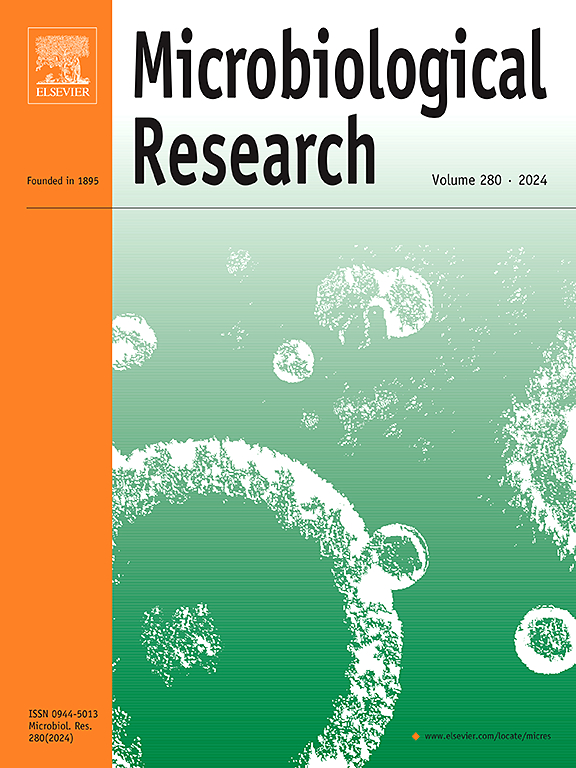多重分解代谢有助于鲍曼不动杆菌中邻苯二甲酸酯类增塑剂的生物降解
IF 6.9
1区 生物学
Q1 MICROBIOLOGY
引用次数: 0
摘要
邻苯二甲酸酯(PAEs)在塑料生产中作为增塑剂被广泛使用。不幸的是,塑料老化过程中释放到环境中的PAEs对人类的生命和健康构成了威胁。尽管微生物生物降解PAEs已被证明是现代塑料污染的一种新兴生物修复方法,但PAEs的微生物分解代谢仍然难以捉摸。本研究以邻苯二甲酸二辛酯(DnOP)为唯一碳源,从原油废水中分离出一种PAE降解细菌(鉴定为鲍曼不动杆菌EMB-1),并通过多组学方法揭示了PAE降解途径。我们观察到鲍曼不动杆菌EMB-1在低(2-5 g/L)和高(20-50 g/L)浓度的DnOP下都能生长良好,但由于缺乏己糖激酶而不能在葡萄糖上生长。多组学分析表明,鲍曼不动杆菌EMB-1具有多种分解代谢途径,包括苯乙酸降解、原儿茶酸(PCA)降解和苯甲酸酯降解,协同降解DnOP。有趣的是,苯乙酸酯和苯甲酸酯的分解代谢与三羧酸循环直接相关,而部分PCA降解用于生成合成芳香氨基酸的底物。我们的研究结果促进了对微生物PAE分解代谢的理解,并扩大了微生物资源,可以促进顽固的邻苯二甲酸酯类增塑剂的生物升级循环和生物修复。本文章由计算机程序翻译,如有差异,请以英文原文为准。
Multiple catabolism contributes to biodegradation of phthalate-based plasticizers in Acinetobacter baumannii
Phthalates (PAEs) have been widely used as plasticizers in the production of plastics. Unfortunately, PAEs released into the environment during plastic aging pose a threat to human life and health. Although microbial biodegradation of PAEs has proven to be an emerging bioremediation approach to modern plastic pollution, the microbial catabolism of PAEs remains elusive. Here, we isolate a PAE-degrading bacterium (identified as Acinetobacter baumannii EMB-1) from crude oil wastewater using Di-n-octylo-phthalate (DnOP) as the sole carbon source and unravel the PAE degradation pathway through a multi-omics approach. We observe that A. baumannii EMB-1 grows well both at low (2–5 g/L) and high (20–50 g/L) concentrations of DnOP but cannot grow on glucose due to a lack of hexokinase. The multi-omics analyses reveal that A. baumannii EMB-1 employs multiple catabolic pathways, including phenylacetic acid degradation, protocatechuic acid (PCA) degradation, and benzoate degradation, which synergistically degrade DnOP. Interestingly, phenylacetate and benzoate catabolism is directly linked to the tricarboxylic acid cycle, whereas partial PCA degradation is used to generate substrates for synthesizing aromatic amino acids. Our findings advance the understanding of microbial PAE catabolism and expand microbial resources that could benefit biological upcycling and bioremediation of recalcitrant phthalate-based plasticizers.
求助全文
通过发布文献求助,成功后即可免费获取论文全文。
去求助
来源期刊

Microbiological research
生物-微生物学
CiteScore
10.90
自引率
6.00%
发文量
249
审稿时长
29 days
期刊介绍:
Microbiological Research is devoted to publishing reports on prokaryotic and eukaryotic microorganisms such as yeasts, fungi, bacteria, archaea, and protozoa. Research on interactions between pathogenic microorganisms and their environment or hosts are also covered.
 求助内容:
求助内容: 应助结果提醒方式:
应助结果提醒方式:


